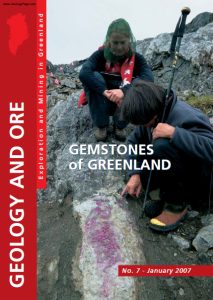
Renewed focus on Greenland gemstones has been experienced since the turn of the century.
Two gemstone companies have demonstrated solid and continued interest in the potential of classical gemstones in Greenland in this period. Diamonds and rubies are definitely now in focus with the size of diamonds growing almost with every new exploration event. The largest diamond to date has just been reported at 0.122 carats.
Rubies and pink sapphires are now at hand with large, high-quality stones in faceting as well as in carving types. Exploration activity targeted at both commodities may be approaching the next stage, with pre-feasibility studies and production considerations. A number of other species of coloured gemstones and generally lower-priced semi-precious gem material have also been found, and these are often very much in demand locally as well as internationally. Well-known examples are kornerupine, tugtupite, lazurite and amazonite. Several multi- coloured rock types have been produced on a small scale locally for many years and have gained high popularity among tourists and collectors, with the famous nuummite, greenlandite and ‘ice blue’ chalcedony being the most favoured.
A number of additional classical coloured gemstones such as beryl, cordierite, peridote, tourmaline, garnet, spinel and topaz are known from scattered occurrences, but their potential has never been tested. The variety in the Greenland geological environment, not least the pegmatite occurrence, is definite justification for more systematic exploration for such stones.










